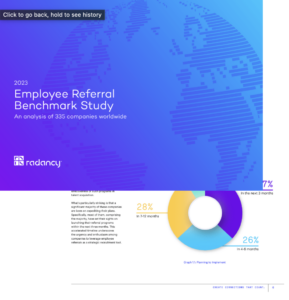As many professionals working in talent acquisition know, recruiting costs can quickly escalate. Everything from advertising job openings to the hours HR professionals dedicate to the recruitment process comes with a hefty price tag. Yet, paradoxically, the success of a business hinges on its ability to attract top talent efficiently and cost-effectively. This balance is not just about saving money—it’s about investing resources wisely to foster growth and profitability. Here are 8 ways in which an organization can reduce costs while maintaining a successful recruiting strategy:
1. Harness Social Media
The digital age provides unique recruitment opportunities, with social media and employee networks playing key roles in contemporary recruitment strategies. These channels enable the creation of content that highlights company culture and values, attracting professionals who share similar ideals.
Wider Reach at Lower Cost: Social media revolutionizes recruitment by enabling wider global reach and cost-efficiency, precise candidate targeting, and enhanced employer branding, streamlining the hiring process and attracting more qualified candidates at a reduced cost.
Pro-Tip: Develop a content calendar for social media that highlights employee success stories, behind-the-scenes looks at your workplace, and updates on exciting projects or initiatives. This approach not only amplifies your reach but also builds a compelling employer brand.
2. Employee Referrals
Employee referrals stand as a highly effective method for streamlining recruitment processes and cutting costs. By encouraging current employees to refer qualified candidates from their personal networks, companies tap into a rich vein of potential talent that is often pre-vetted for cultural and skill fit.
Accelerated Hiring and Enhanced Quality: Referral programs expedite the hiring process and elevate hire quality, foster community and trust among employees, and yield cost savings with lower turnover rates, as referrals integrate well with company culture, contribute to team growth, and demonstrate higher job satisfaction and longevity.
Pro-Tip: Encourage a culture of participation by regularly communicating the importance of referrals and recognizing successful referrers publicly. This not only motivates employees to actively participate but also reinforces the value the company places on their input and network, leading to a more engaged and proactive workforce in the recruitment process.

As seen in the 2023 Employee Referral Benchmark Study, 50% of companies using an employee referral program reported reduced recruiting costs. For more valuable insights, download the study for free.
3. Utilize an Applicant Tracking System (ATS)
Investing in an Applicant Tracking System (ATS) boosts efficiency and cuts recruitment costs by automating key aspects like resume screening. An ATS filters candidates using set criteria, significantly reducing expenses.
Efficiency in Candidate Screening and Communication: An Applicant Tracking System (ATS) enhances recruitment by streamlining candidate screening and communication, offering strategic analytics and insights for process optimization, and improving candidate engagement and employer branding, thereby reducing costs and improving the quality of hires through efficiency and insightful data analysis.
Pro-Tip: Integrate your ATS with other HR systems to facilitate seamless data flow and analytics. Leveraging AI-driven features within an ATS can further enhance candidate matching and predict hiring success, optimizing the recruitment process. For example, Radancy’s Employee Referral Program was developed to work seamlessly with various Applicant Tracking Systems for increased ease of use.
4. Elevate Employer Branding
A strong employer brand communicates a company’s values, culture, and the benefits of working there, making it a more attractive place to work. This positive reputation can lead to a decrease in recruitment expenses in multiple key ways:
Work Culture Alignment: A strong employer brand attracts culturally and value-aligned candidates, improving recruitment efficiency and reducing screening efforts. It also enhances retention, as employees aligned with the company’s mission tend to stay longer, reducing recruitment and training costs.
Pro-Tip: Implement an employer branding strategy that involves leadership in storytelling and employee advocacy. Encourage leaders to share their vision and values through platforms like LinkedIn, and create opportunities for employees to share their experiences and testimonials.
5. Implement Data-Driven Recruitment Strategies
Leveraging data analytics in recruitment is a game-changer for organizations aiming to streamline their hiring processes. This approach marks a departure from traditional, intuition-based recruitment strategies that often rely on guesswork and subjective assessments. Instead, it embraces a strategic, evidence-driven process that utilizes data to make informed decisions. Here’s how:
Data-Driven Channel Optimization: Leveraging data analytics in recruitment enables organizations to optimize sourcing strategies by focusing on the most effective channels, understand candidate behaviors for better engagement, and enhance cost and time efficiency, ultimately leading to improved recruitment processes and higher quality hires.
Pro-Tip: Utilize analytics to conduct A/B testing on job postings and recruitment campaigns, identifying which messages and channels yield the best response rates and applicant quality. This data can then inform future recruitment strategies, ensuring continuous improvement.
6. Engage in Professional Networking
By leveraging the connections and relationships built within professional networks, organizations can streamline their hiring processes and find qualified candidates more efficiently and cost-effectively. Here are some ways professional networking can lead to lower recruitment costs:
Access to a Wider Talent Pool: Professional networking allows companies to access a broader talent pool and connect with passive candidates cost-effectively through industry events, professional groups, and social media, significantly reducing advertising expenses.
Pro-Tip: Create a calendar of industry events and identify opportunities for your company to contribute, whether through sponsorship, presentations, or panel discussions. This not only enhances your brand visibility but also fosters direct connections with potential candidates.
7. Craft Compelling Job Descriptions
The job description is often the first point of contact between your company and potential candidates. A well-written job description that clearly outlines the role, expectations, and benefits can significantly increase the quality of applicants. Here’s how:
Attracts the Right Candidates: Crafting detailed job descriptions helps attract suitable candidates by clearly defining role expectations, streamlining screening, and saving resources. This approach minimizes turnover through better role and candidate alignment, and enhances the candidate experience, possibly boosting referrals and lowering recruitment costs.
Pro-Tip: Use clear, inclusive language that speaks directly to the desired candidate persona. Highlight unique selling points of the position and the company, and ensure the application process is straightforward and accessible.
8. Offer Flexible Compensation Packages
The key lies in crafting compensation packages that are not just competitive in terms of salary but are also rich in non-monetary benefits that cater to a wide range of employee needs and lifestyles. Here’s how this approach can lead to cost savings in recruitment:
Increased Attractiveness of Offers: Offering financial incentives, flexible schedules, remote work, and career development opportunities like training and mentorship makes jobs more attractive to diverse candidates. Customizing compensation to match different market segments’ priorities—career growth for younger workers and higher pay for seasoned professionals—enables focused recruitment.
Pro-Tip: Consider implementing flexible working arrangements, comprehensive health and wellness programs, and continuous learning opportunities. Regularly survey employees to understand their changing needs and preferences, adapting your benefits package accordingly.
Final Thoughts
Implementing these strategies can greatly lower recruitment costs while attracting top talent. The approach involves being innovative, using technology, and developing a strong employer brand that appeals to the target workforce. As the recruitment field evolves, staying flexible and innovative is essential for a competitive advantage in talent acquisition.
Want to dive deeper into the 8 effective ways of reducing recruiting costs? Download our one pager here.


















